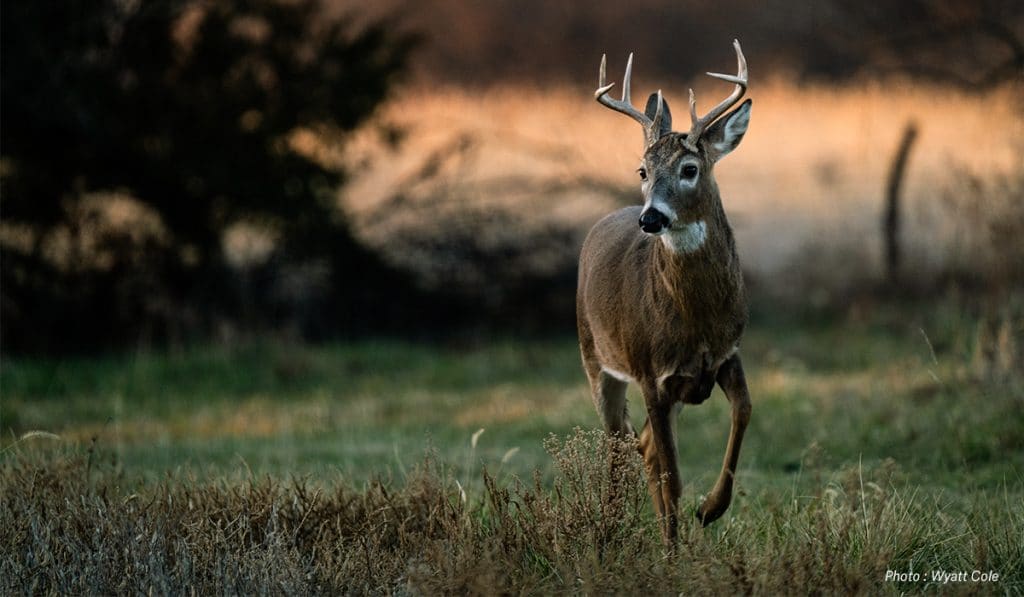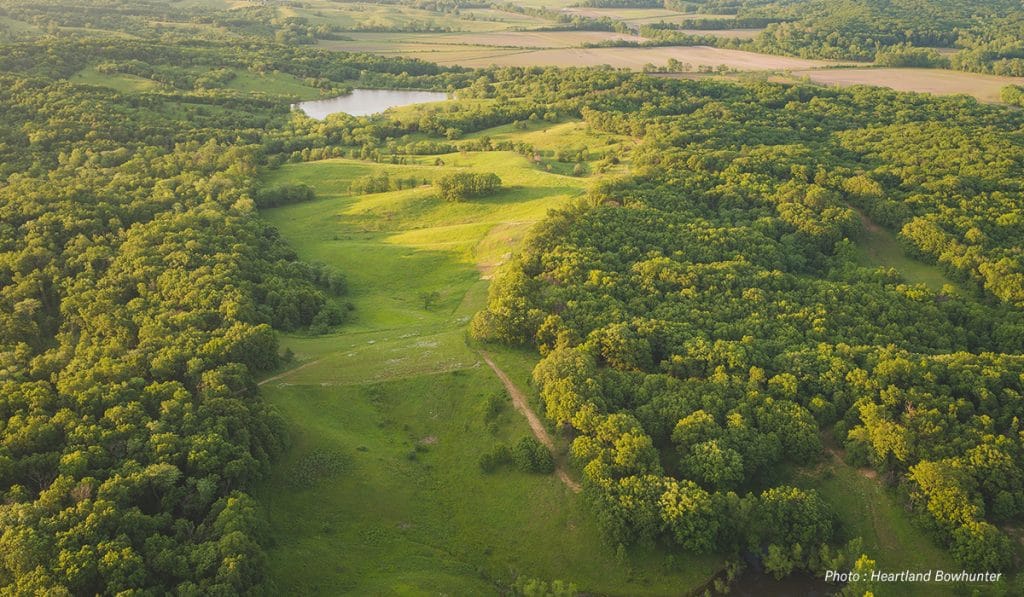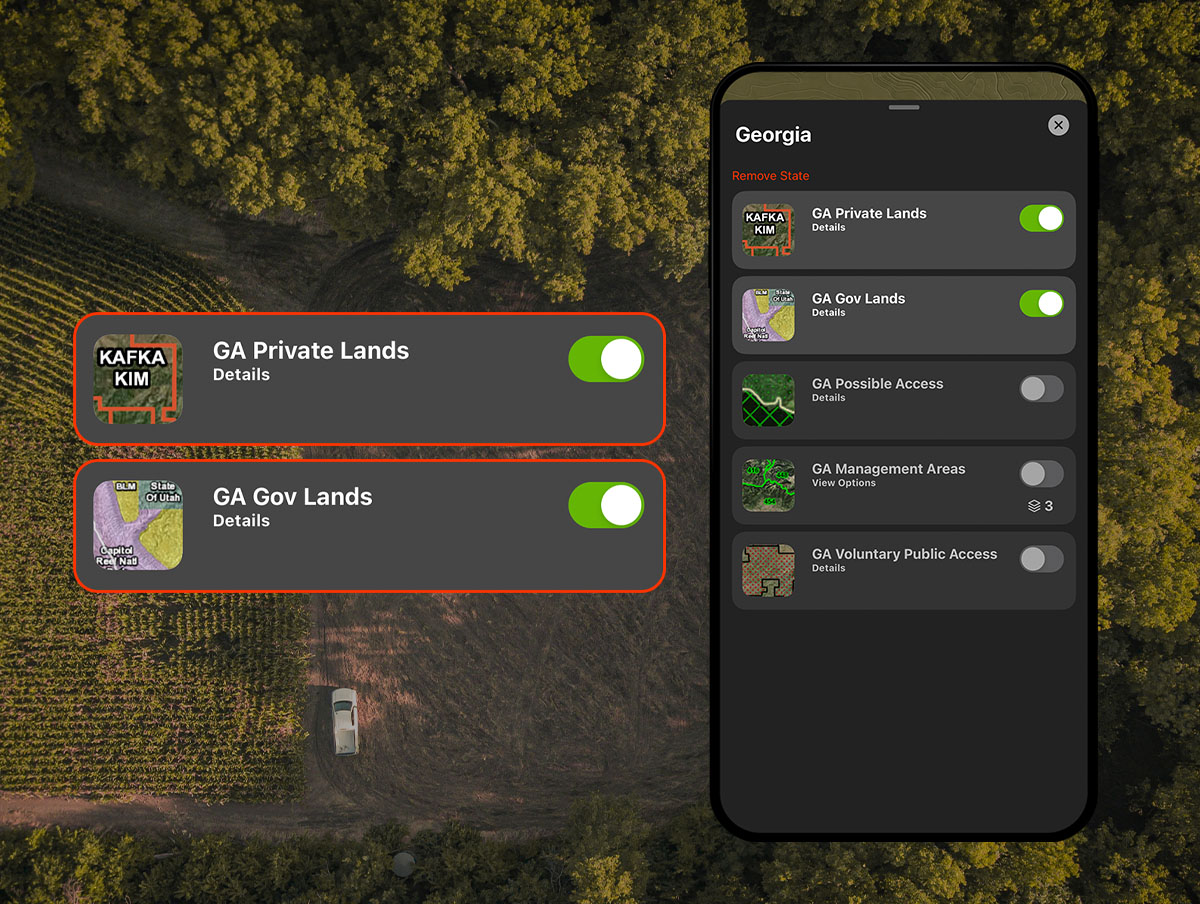Hunting on leased land originated in the South in the 1930s as public lands became more scarce. By the end of the century, nearly one million sportsmen were spending upwards of $625 million a year on hunting leases, at an average cost of $2.27 per acre. Today, the cost of leased hunting land is, on average, a lot more.
In this article, we’ll dive into how hunting leases work, general costs related to leasing hunting land, why landowners might lease land, and tips on finding the right hunting lease for you.
Hunting Leases 101
Hunting leases are agreements between a hunter and a landowner, or a land-holding entity, that allow access to and the right to hunt land for a defined period. A hunter may pay on a per-acre basis, per-season fee, or per-hunt situation. In return, the landowner may provide or allow for certain improvements to the land that benefit both wildlife and hunters.
Hunters may be interested in securing a hunting lease because it can provide new access to land that receives less hunting pressure than public land or lands shared through a hunting club. Generally speaking, hunting leases will likely cost more than a typical hunting club membership but less than buying property outright, and the benefits to the hunter include having more input into how the land is managed for wildlife, less overall pressure on the parcel, and an opportunity to build a long-lasting relationship with the landowner.

A hunter may pay on a per-acre basis, per-season fee, or per-hunt situation.
Types of Hunting Leases
There are several types of hunting leases, including:
No-Fee Access Hunting Lease
No money is exchanged for access; it is just a written agreement between the landowner and the hunter. No-fee access leases are hardly more than having landowner permission to hunt their land, but with a contract.
- Pros: No-fee access arrangements can build a relationship between the landowner and hunter that is not based on a monetary exchange. The landowner may benefit from the hunter managing wildlife populations and reducing crop damage, while the hunter likely enjoys flexibility with hunting schedules and access. The hunter also benefits financially by not having to fork over money for access.
- Cons: For landowners, no-fee access leases can include liability should a hunter get injured while on the private property, and come, by design, with a lack of financial compensation. Hunters may experience limited improvements on the land if there are no financial investments in the property, or take on a risk of over-crowding if the landowner opens it up to other hunters without one’s knowledge.
Exchange of Services Hunting Lease
In an exchange of services arrangement, hunters do not pay money for access; instead, they provide the landowner a service in exchange for hunting on the land. The service might simply be watching for trespassers, repairing fences, or tending to food plots.
- Pros: For landowners, an exchange of services lease avoids the complexities of monetary arrangements and potential tax implications. Hunters may benefit from the possibility of improving land conditions for hunting productivity, along with flexibility in terms negotiated based on the hunter’s skills, time, and resources.
- Cons: Landowners risk receiving low-quality services if the hunter lacks the skills for certain types of needed labor, and liability if the hunter is injured while performing a task. For hunters, there is a risk of the labor taking time away from hunting and a lack of long-term agreement means access in future seasons isn’t guaranteed.
Fee Hunting Lease
The more typical hunting lease, and what we’ll cover below, is the Fee Hunting lease, which can be further determined by daily fees, a season fee, or a long-term multi-year fee.
How Much Is a Hunting Lease Per Acre?
If you want the most truthful answer to “How much do hunting leases cost?” the answer is, “It depends.” Like most else, you’ll probably get what you pay for, so the more expensive the lease the better that property likely is. Most often, the value of hunting leases proves itself over time as the land produces a fair number of high-quality wildlife.
Generally, today’s hunters can expect to pay between $20-$50 per acre for a hunting lease in the Northeast to $10 per acre in the South, and $35 per acre in the Midwest. The price is determined by a number of factors, including the quality of game harvested, exclusivity of the property to the hunter(s), the distance from town (i.e. closer to a town is likely more expensive), amenities (use of existing tree stands or buildings on the property, running water, access to power, etc.), amount of acreage (generally, leasing more acres costs less per acre), and the improvements made to the property (essentially, how well it’s managed).
Generally, today’s hunters can expect to pay between $20-$50 per acre for a hunting lease in the Northeast to $10 per acre in the South, and $35 per acre in the Midwest.
A handful of online land lease calculators can help landowners assess fair compensation for hunting leases. For instance, using a fictitious 1,000-acre land lease in Montana that features excellent food and water conditions and potentially holds trophy-class game results in a cost for a hunter to lease that land ranging from $7-$10 per acre.
In a 2019 report by the American Hunting Lease Association, nearly 44% of hunters surveyed said they have leased land in the past or currently lease for hunting purposes. Only 11% of hunters say they would never pay for hunting access. The majority (57%), however, feel that hunting leases are too expensive for the average hunter and nearly 81% of hunters who get free access to private properties already knew the landowner before asking permission to hunt.
Landowners, though, seem committed to the idea that leasing their land for hunting is a good thing. In the same report, nearly 62% of landowners who lease land have been doing it for over 10 years; 52% offer up more than 400 acres of huntable property; 52% enjoy leasing; and 46% charge $10 to $20 per acre.
How To Find Hunting Leases
When you’re ready to start looking for land to lease, make sure you can answer the following questions about what you’re looking for:
- What species do I want to hunt there?
- How often do I plan on hunting the property in a given season?
- How do I want to access the property (on foot, ATV, or vehicle for instance)?
- What means of game retrieval can I use?
- What might I be able to contribute to the land in terms of improvements, amenities, or wildlife management?
- How successful have previous hunters been on the property?
- How many people does the parcel need to accommodate?
- Is the leased property open to non-hunting recreation?
- How much can I or each person on the lease spend?
Simply jotting down these answers will give you important information to hone your search for the right property. Now you can start looking for available hunting land through some of the following resources:
- Commercial Hunting Lease Networks – More than a handful of companies specialize in pairing hunters with available lease lands. These companies may either own lands or have built a network of landowners who are offering properties. A few worth checking into include Rayonier Hunting & Rec, Legacy Wildlife Services, and Westervelt Wildlife Services.
- Realtors – Call real estate agents to let them know you’re looking to spend money on leasing a hunting property. They already have established relationships with landowners to whom they’ve sold land and others trying to sell.
- School Trust Land – There are many states in which lands owned by school districts are open to hunting. Sometimes those lands are public properties, but sometimes they are open by lease only. With these lands, make sure you know what other activities are allowed, as these properties are also often leased for cattle grazing.
- Ask Everyone You Know – There’s a lot to be said about word-of-mouth advertising, and that applies to finding good hunting leases. Ask your hunting buddies, or ask them to ask their hunting club friends. Find good pieces of private land and knock on some doors. Not every landowner is aware there are people willing to pay to hunt their property.
What Makes Good Hunting Lease Land?
Good hunting lease land is just like good hunting land, so if a property has good food sources, cover, and water, then it’s likely to hold quality animals. But what really makes good hunting lease land is the lease.
Before you sign any contracts for a hunting lease, a few factors will help you assess the potential quality of a hunting lease:
- Scout the property yourself. Ask permission to walk the land, explore the access points, and see for yourself if there are ample spots to hunt.
- Ask the lessor questions such as:
- Who’s responsible for keeping up the roads?
- What commercial activities are offered or planned for the property? Will there be cattle grazing or logging?
- How many hunters are leasing the property outside my own group, if any?
- (For deer leases) How many deer are you permitted to take: just one or as many for which I have tags or permits?
- What, if any, input will I have for making improvements to the property? Can I suggest food plots, or new access points, or put up my own blinds or tree stands?
- Talk to the neighbors of the property. What kinds and quality of animals have they been seeing on their land?
- Contact the regional wildlife biologist. Explain your hunting goals to see if what you’re looking for is achievable in that area. The state biologist would have a good idea, for instance, how many 4-plus-year-old bucks are around.
After you secure a hunting lease, make sure you do everything you can to keep it. If you find the success you’re looking for there, you’ll likely want to come back the next year. Treat the owner or land-holder as a partner with whom you share the same goal: to make the best hunting experience on the best hunting property possible. If you do that, you may just have the keys to incredible hunting land for years to come.

Treat the landowner as a partner with whom you share the same goal: to make the best hunting experience on the best hunting property possible.
Buy or Lease Hunting Land?
Perhaps you are choosing between buying or leasing hunting land. What factors should you consider? Here are a few pros and cons to think about:
Buying:
- Upfront Costs:
- Purchasing land requires a significant initial investment, including the property price, closing costs, and potential financing.
- Recurring Costs:
- Be aware of property taxes, maintenance, insurance, and possible development costs (e.g., food plots, blinds).
- Equity Building:
- Ownership builds equity over time and provides a tangible asset that could appreciate in value.
Leasing:
- Lower Cost:
- Leasing typically involves a lower annual cost, often ranging from $5 to $50 per acre.
- No Long-Term Commitment:
- You only pay for the years you hunt, avoiding the financial burden of ownership.
- No Equity:
- Unlike owning, you won’t build equity or have a resale opportunity.
Leasing Your Land as a Landowner
Good hunting land requires three things: food, water, and cover. If you have a large enough parcel to host one or more hunters, leasing your land for hunting is certainly an option. Remember, six hunters can safely hunt 200 acres.
Other factors to consider are whether you have space for and can allow camping. Is your land easy to access or require specialized equipment such as 4×4 vehicles or ATVs? Do you live nearby to monitor its usage? And, importantly, are there trophy-size animals on your property?

How To Use onX Hunt on Leased Land
You can set up the onX Hunt App or Web Map to help you search, prospect, and hunt leased land.
Here are a few ways:
- Public/Private Land Boundaries – Use the Government Lands Layer that color-codes property boundaries for finding public school trust lands, or use the Private Land Ownership Maps to get contact information for properties that interest you.
- Boone & Crockett Layer – onX partnered with The Boone and Crockett Club to highlight concentrated areas where trophy class animals were harvested. The layer has trophy data for every North American big game animal a hunter can imagine. With this layer, you can research any potential leased land based on the quality of the game.
- National Wild Turkey Federation Layer – With this layer turned on, you’ll see which turkey subspecies are in the region and their distribution.
- Line Distance Tool – Whether you’re scouting a potential piece of property or ready to hunt the piece you’ve leased, using the Line Distance Tool will allow you to measure the distance between any two points: perfect for judging shooting lanes, distance to your tree stand, or for measuring across a food plot.